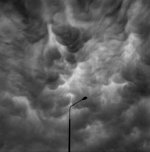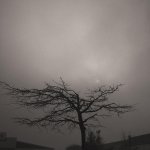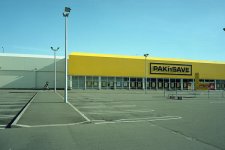Chriscrawfordphoto
Real Men Shoot Film.

This is the jail in the little town of Texola, Oklahoma! The tiny jail, which is basically a single free-standing cell, was built in 1910. The windows have no glass, just steel bars on them and the door. There's a little gas heater inside, though I doubt it did much good in the winter, since the door is just the bars!
The stone slab sitting against the door is engraved with the names of the local high school's class of 1939. I don't know why it was left by the town's abandoned jail.
I stopped in Texola, which is right on the state line, on my way to New Mexico. I photographed the Water Hole #2 and The Place, but got rained on before I could locate the jail. On the way back to Indiana, we stopped again in Texola so that I could photograph the tiny jail too.
8-17-11








